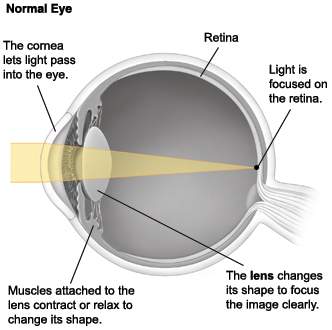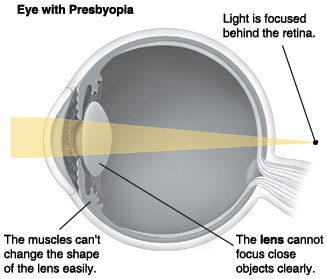Presbyopia is the loss of close-up focusing. It's not a disease. It is a normal aging process of the eye. When you are younger, the lens in your eye changes shape to focus light directly on the back of your eye (the retina). But as you get older, the lens hardens and can't change its shape as easily. It then can’t focus clearly on close objects. This makes them look blurry.
What are the symptoms?
Presbyopia makes it hard to do things close-up. This includes reading small print, using tools, and threading a needle. The first sign may be a tired feeling when you look at something close-up. Presbyopia most often starts when you’re 40 to 45 years old. But it can start at an earlier age.



